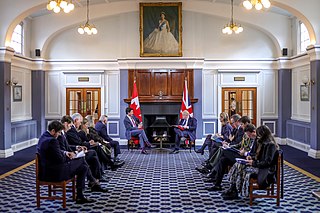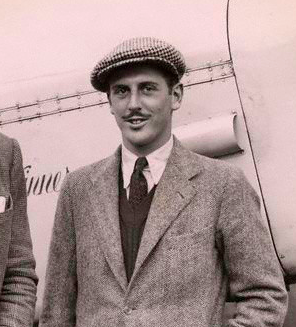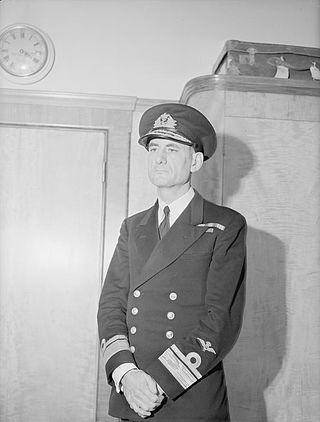Related Research Articles

The Aérospatiale/BAC Concorde is a retired Franco-British supersonic airliner jointly developed and manufactured by Sud Aviation and the British Aircraft Corporation (BAC). Studies started in 1954, and France and the UK signed a treaty establishing the development project on 29 November 1962, as the programme cost was estimated at £70 million . Construction of the six prototypes began in February 1965, and the first flight took off from Toulouse on 2 March 1969. The market was predicted for 350 aircraft, and the manufacturers received up to 100 option orders from many major airlines. On 9 October 1975, it received its French Certificate of Airworthiness, and from the UK CAA on 5 December.

The de Havilland DH.106 Comet was the world's first commercial jet airliner. Developed and manufactured by de Havilland in the United Kingdom, the Comet 1 prototype first flew in 1949. It featured an aerodynamically clean design with four de Havilland Ghost turbojet engines buried in the wing roots, a pressurised cabin, and large windows. For the era, it offered a relatively quiet, comfortable passenger cabin and was commercially promising at its debut in 1952.

The Bristol Type 175 Britannia is a retired British medium-to-long-range airliner built by the Bristol Aeroplane Company in 1952 to fly across the Commonwealth. During development two prototypes were lost and the turboprop engines proved susceptible to inlet icing, which delayed entry into service while solutions were sought.

The Vickers VC10 is a mid-sized, narrow-body long-range British jet airliner designed and built by Vickers-Armstrongs (Aircraft) Ltd and first flown at Brooklands, Surrey, in 1962. The airliner was designed to operate on long-distance routes from the shorter runways of the era and commanded excellent hot and high performance for operations from African airports. The performance of the VC10 was such that it achieved the fastest crossing of the Atlantic by a subsonic jet airliner of 5 hours and 1 minute, a record that was held for 41 years, until February 2020 when a British Airways Boeing 747 broke the record at 4 hours 56 minutes due to Storm Ciara. Only the supersonic Concorde was faster. The VC10 is often compared to the larger Soviet Ilyushin Il-62, the two types being the only airliners to use a rear-engined quad layout. The smaller business jet Lockheed JetStar also has this engine arrangement.

Caledonian Airways was a wholly private, independent British charter airline formed in April 1961. It began with a single 104-seat Douglas DC-7C leased from the Belgian flag carrier Sabena. Caledonian grew rapidly over the coming years to become the leading transatlantic "affinity group" charter operator by the end of the decade. During that period, passenger numbers grew from just 8,000 in 1961 to 800,000 in 1970. The latter represented 22.7% of all British non-scheduled passengers. It also became Britain's most consistently profitable and financially most secure independent airline of its era, never failing to make a profit in all its ten years of existence. By the end of 1970, Caledonian operated an all-jet fleet consisting of eleven aircraft and provided employment for over 1,000 workers. At that time, its principal activities included group charters between North America, Europe and the Far East using Boeing 707s, and general charter and inclusive tour (IT) activities in Europe utilising One-Elevens.
This is a list of aviation-related events from 1958.

The Avro York was a British transport aircraft developed by Avro during the Second World War. The design was derived from the Avro Lancaster heavy bomber, several sections of the York and Lancaster being identical. Due to the importance of Lancaster production, York output proceeded slowly until 1944, after which a higher priority was placed upon transport aircraft.

RAF Northolt is a Royal Air Force station in South Ruislip, 2 nautical miles from Uxbridge in the London Borough of Hillingdon, western Greater London, England, approximately 6 mi (10 km) north of Heathrow Airport. The station handles many private civil flights in addition to Air Force flights. Northolt has one runway in operation, spanning 1,687 m × 46 m, with a grooved asphalt surface. This airport is used for government and VIP transport to and from London.
British Airtours was a British charter airline with flight operations out of London Gatwick and Manchester Airports.
Mike Bannister is an airline pilot. He is most famous as the Chief Pilot of British Airways' Concorde fleet, a post which he held from 1995 until its withdrawal from service in 2003.
Christopher John Dugmore Orlebar was a former British Concorde pilot with British Airways. He was well known as a lecturer, writer, and frequent contributor to TV aviation documentaries on aviation subjects generally, and on the Concorde in particular.

British Eagle International Airlines was a major British independent airline that operated from 1948 until it went into liquidation in 1968. It operated scheduled and charter services on a domestic, international and transatlantic basis over the years.

BOAC Flight 712 was a British Overseas Airways Corporation (BOAC) service operated by a Boeing 707-465 from London Heathrow Airport bound for Sydney via Zurich and Singapore. On Monday 8 April 1968, it suffered an engine failure on takeoff that quickly led to a major fire; the engine detached from the aircraft in flight. After the aircraft had made a successful emergency landing, confusion over checklists and distractions from the presence of a check pilot contributed to the deaths of five of the 127 on board. The direct cause of the fire was the failure of a compressor wheel, due to metal fatigue.

British Airways (BA), the United Kingdom's national airline, was formed in 1974 with the merger of the two largest UK airlines, British Overseas Airways Corporation (BOAC) and British European Airways (BEA), and including also two smaller regional airlines, Cambrian Airways and Northeast Airlines. The merger was the completion of a consolidation process started in 1971 with the establishment of the British Airways Board, a body created by the British government to control the operations and finances of BOAC and BEA, which initially continued to exist as separate entities.

Sir Giles Connop McEachern Guthrie, 2nd Baronet, was an English aviator, merchant banker and later, an airline industry executive, serving as the chairman and chief executive of the state owned airline British Overseas Airways Corporation (BOAC).

British Overseas Airways Corporation (BOAC) was the British state-owned airline created in 1939 by the merger of Imperial Airways and British Airways Ltd. It continued operating overseas services throughout World War II. After the passing of the Civil Aviation Act 1946, European and South American services passed to two further state-owned airlines, British European Airways (BEA) and British South American Airways (BSAA). BOAC absorbed BSAA in 1949, but BEA continued to operate British domestic and European routes for the next quarter century. The Civil Aviation Act 1971 merged BOAC and BEA, effective 31 March 1974, forming today's British Airways.

Rear-Admiral Sir Matthew Sausse Slattery, was a British naval officer, military aviator and businessman. He was the managing director and chairman of Short Brothers and Harland, chairman of British Overseas Airways Corporation and latterly served as chairman of Hawthorn Leslie and Company. He was also a board member of Bristol Aeroplane Company and The National Bank.
Athelstan Sigfrid Mellersh Rendall OBE, known to his friends as Flaps Rendall, was a British pilot.
Hugh Palliser Kingsley Dibley is a former commercial airline pilot and trainer who made contributions toward conserving fuel and controlling noise during aircraft operations. He was also a successful racing car driver and race car constructor.
David Pettit Davies was a British test pilot who was chief test pilot for the United Kingdom Civil Aviation Authority for 33 years. He was known as "the test pilots' test pilot".
References
- ↑ "British Airways Grounds Top Concorde Pilot For Rest of Career". AP News Archive. Associated Press. 28 July 1988. Retrieved 6 April 2014.
- ↑ Television documentary, Concorde Captain talks about Barrel Roll, on YouTube.